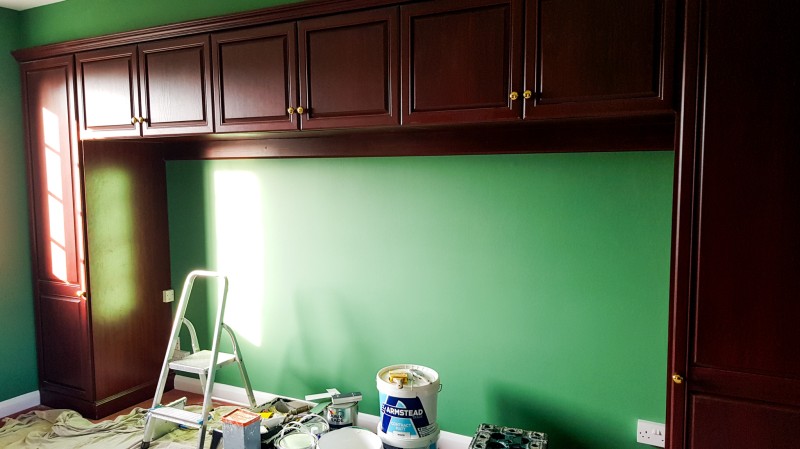You are here: How can hiring an interior designer add value to your home?
Why go pro rather than doing the job yourself?
For most of us, homes just happen. Falling together after a trip to John Lewis, a new sofa here, a lamp there – until you find yourself surrounded by a hotchpotch of furniture and fittings that you may not particularly like. Part of this is down to money. How many of us can afford to fill our homes with exquisitely carved marble fireplaces, antique furniture and Persian rugs or have the time to search for perfect pieces. Surely, interior design is just for the richest 1%?
Jenine Timms, creative director at Loke Interiors, would disagree. She said: “There are many misconceptions about interior design services and costs and that designers only create designs for those with big budgets and with the same taste in interior decoration.” Most homeowners who invest in an interior designer, says Timms, find it saves them money because they avoid costly mistakes. For example, a sofa that is too big for the space or dimly lit rooms.

What is interior design?
So, what does an interior designer do exactly? And how can they add value? It’s more than just choosing colours and cushions, said Timms. Interior designers are trained to work with architecture through the history of design, spatial and light planning, she said. They are knowledgeable about colour, pattern, texture and balance. But it’s their imagination and creativity that can lead to problem-solving and original thinking when obvious solutions aren’t possible. Plus, their experience.
“Many people find it difficult to decide which direction they want to take a room stylistically and/or are limited to what they can find on the high street. Others simply don’t have the time and inclination. Interior designers can accomplish your interior design dreams, giving you a well- designed space, you are proud of and where you and your family and friends can relax, be happy and make memories,” said Timms.
Developing a brief
A good interior designer will ask loads of questions and listen. How will you be using the space? What do you want to achieve? Do you have any style preferences? Not everyone knows what they want. Fashion designer turned interior designer Matthew Williamson starts every project with a simple list. He sits down with clients and asks 20 questions, such as do you have a treasured possession? Who’s your favourite artist? Who’s your design icon? In this way he gets people to ask themselves, what do I like? Williamson agrees interior design isn’t just for the wealthy.
People often struggle with so much choice online where we are bombarded with images. Timms said: “Often, I will go to clients who have so many ideas but no idea how to put it all together. However, I always encourage clients to share their preferences and choices, especially visual ones with me so I can understand what they like.” In other words, a picture is worth a thousand words.
Renee Killian-Dawson, creative director of Studio Killian-Dawson, doesn’t have a list of questions. “I begin with what is in my head,” she said. People hire interior designers for their expertise, she points out. “Obviously it’s all about the client but we start with the site and the building.” Everything that could possibly relate to the site, the building, its history and environment is gleaned and contemplated, she said. Out of that emerges the solutions, said Killian-Dawson who works on high-end projects around the world.
Exercise in negotiation
Working with a client is often an exercise in negotiation. “Often, we will tease something out that the client didn’t know they wanted,” said Killian-Dawson. This may involve pushing them out of their comfort zone while encouraging them to let go of anything that is say, too tacky or over-the-top. Ultimately, it’s the designer’s job to say: “This is what we think works best. The more experienced the client, the less negotiation there is because they trust you,” said Killian-Dawson.
A key skill of an interior designer is visually presenting their ideas in a way you can understand. This involves different tools from floorplans and elevations to 3D mock ups, mood and material boards. The latter may include fabric swatches, paint samples, photos of lighting fixtures, furniture and accessory choices. These help clients to see how individual components come together as a cohesive whole. Many designers also use digital images to not only bring the space to life and show how the layout will work but to play around with scale and different colours.
Killian-Dawson, who often works on historic buildings, paints water colours of rooms and even whole floors to illustrate her designs. “We might look at it from a doll’s house perspective or a series of rooms. It depends on how much clients want to see but it can be expensive, so we don’t do this all the time.” She uses digital overlays over the watercolours if anything needs to be changed.
The interior designer doesn’t use mood boards. “I think they are too static. The plans are the most important part, and everything grows from that. I produce pages and pages on all the FFE (furniture, fixtures and equipment).” She added: “All these tools are amazing. Everyone has a stable of tools they find useful.” Killian-Dawson likes to stay flexible to leave space for surprises and creativity.
To stay on budget
Every project has a budget, big or small. And managing the budget is part of the skill of a good designer. Not every element of a design is equally important. A designer will help you prioritise spending on essentials while finding cost-effective or creative alternatives for others. They should give you different price options for furniture and fixings, so you don’t break the budget. Hiring an interior designer means you will be getting access to their trade discounts and suppliers as well as a creative eye to oversee your project,“If you are lucky and the budget comes in low, that is wonderful,” says Kilham-Dawson. Then you might be able to afford a master mason to handcraft a limestone pillar, rather than use reconstituted stone, she said.
Help prevent problems before they start
Refurbishments can be tricky. From supply chain issues to juggling the different trades for carpentry, tiling, electrical fittings and decorating. It’s very easy for a project to unravel. This is where an interior designer can be a big help. They can liaise between the architect and contractor and make things go smoother by arranging fortrades to visit the site and making sure the delivery times of fixtures and furniture, such as tiles, flooring, bath and kitchen hardware, are on schedule.
Interior designers offer different packages and services. One option is to hire a designer to project manage everything, including paying the decorator, hiring the carpenter, perhaps moving a radiator, plus new flooring, furniture, window coverings, lighting and accessories. Alternatively, if you’re good at decorating or DIY, you can opt for a design only service and organise your own trades. This might be paired with an accessories package, so you can pick from the designer’s chosen goods and exciting finds to complement your scheme.
“Interior design is a very difficult job. Why not rely on someone who can bring in lots of expertise,” said Killian-Dawson. Interior design isn’t just about room plans or lighting, it’s also about heart and soul, how you experience a space. Whether it’s a single room or whole house, a talented interior designer can transform the ordinary to exceptional.
If you are looking to make some home improvements, you may find some of these services useful
Building Regulations
Find details of local experts who can help with Building Regulations
Builders
Find local help with a building project
Architectural Design Services
Find local Architectural Design experts
Structural Inspections
Find an expert to carry out a structural inspection
Building Surveys
I want a local surveyor to do a Building Survey for me
Choose which Architectural service you require
If you are not sure which service you require, check out the options available...


